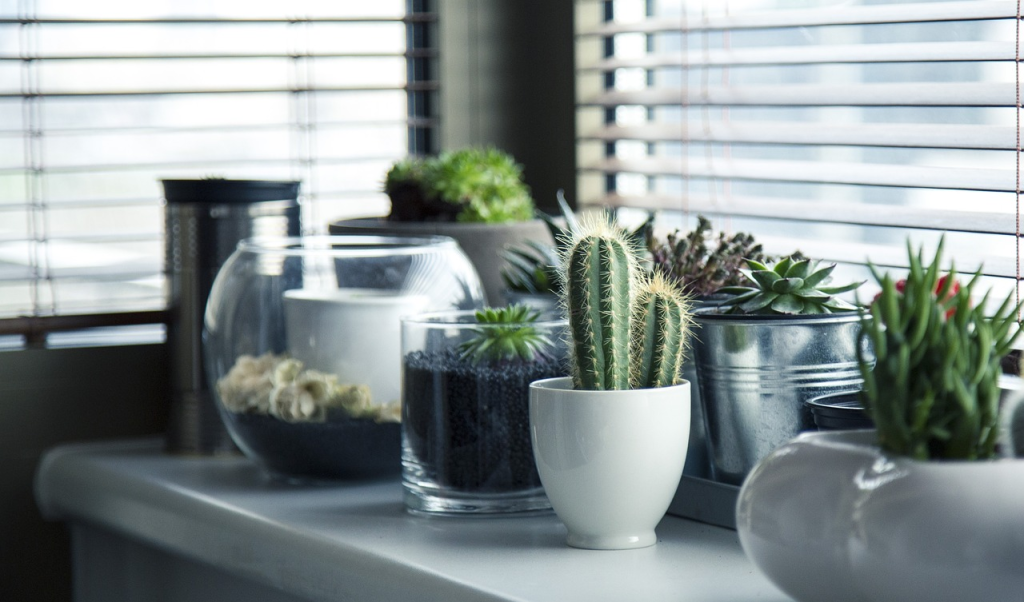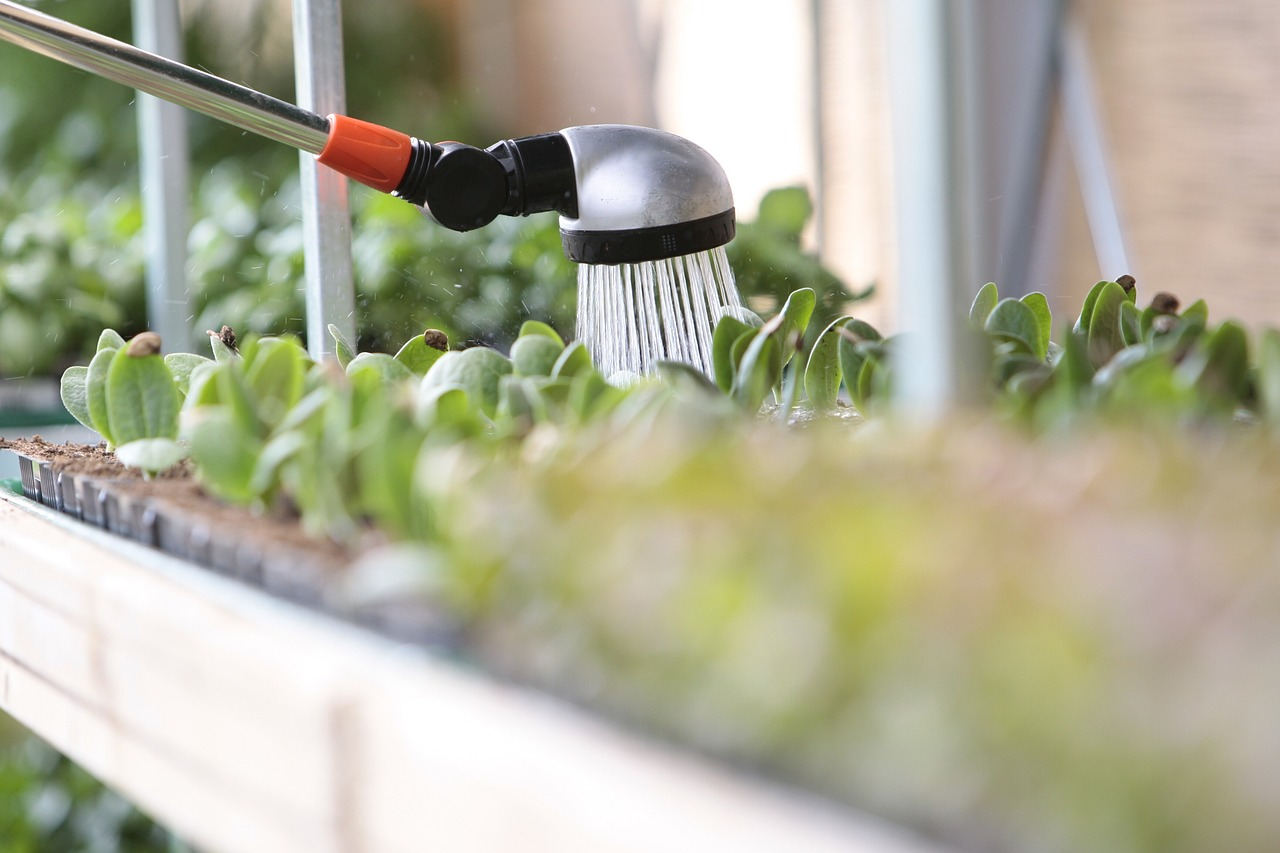Succulents have become increasingly popular in recent years, and it’s no wonder why. With their unique appearances, low maintenance requirements, and remarkable resilience, these arid-loving plants make excellent choices for both indoor and outdoor gardens.
However, despite their easygoing nature, succulents have specific needs — particularly when it comes to watering.
Unlike most plants, figuring out the proper watering frequency for succulents can be tricky since they thrive on a different hydration schedule.
Watering your indoor succulents every 14-21 days is a good starting point. Still, adjustments may be necessary.
In this article, we explore the ideal frequency for watering your succulents. We’ll provide valuable tips and insights that will aid you in nurturing your beloved plants to thrive without overwatering them.
So, grab your watering can and gather your green thumb knowledge as we dive into the world of succulent care.
Factors Determining Watering Frequency
Many considerations go into providing your succulents with a proper environment for growth. In this section, we’ll focus on the two most critical aspects affecting your succulents’ hydration needs:
- climate and seasons
- indoor versus outdoor setting.
By understanding these, you’ll be well-equipped to provide the optimal watering routine for your desert-dwelling companions, ensuring their long-lasting health and vitality.
Climate and Seasons
The environment you live in is crucial in determining how often you should water your succulents.
When planning your watering routine, it’s important to consider local climate, seasonal changes, and humidity levels.
- In hotter, dryer climates or during the summer months, succulents require more frequent watering, typically once a week.
- On the other hand, if you live in an area with cooler temperatures or high humidity levels, you might need to reduce the frequency to every two to three weeks.
Additionally, it’s worth noting that weather patterns continuously change throughout the year. Therefore, it’s vital to adjust your succulent care routines accordingly.
Assess the needs of your beloved plants and adjust your watering habits to accommodate their changing requirements.
Indoor vs Outdoor

Indoor succulents generally retain their moisture longer than their outdoor counterparts. It’s mainly due to regulated temperatures and lack of direct sunlight exposure.
As such, they usually require less frequent watering compared to those grown outdoors. However, keep an eye on them during winter, as heated homes can cause the air to become excessively dry.
Indoor succulent plants typically need to be watered about once a week. Giving them enough time to store water in their leaves and let the soil dry out between waterings is essential.
Follow these tips and techniques for properly watering indoor succulents:
- Consider using a watering can with a small pour spout. It will allow you to apply water directly to the plant’s core.
- After watering, let the excess water drain through the holes in the pot. If your plant is sitting on a saucer, be sure to empty any remaining water that has drained through the soil. This step helps prevent over-watering and root rot.
- It’s essential to avoid soaking the leaves when watering indoor succulents. Too much moisture on the leaves can lead to rot since indoor environments typically don’t have enough heat and fresh airflow to dry them quickly.
- Lastly, always let the soil dry completely between waterings. This practice will ensure your indoor succulents remain healthy and adequately hydrated without being overwatered.
Outdoor succulents will change their appearance, providing clues about their watering needs. If the soil is wet, hold off on watering, regardless of the time frame. Conversely, if the soil is dry and the foliage looks shriveled, it’s time to give your plant a good drink.
When watering succulents in containers, follow these simple steps:
- Saturate the soil at the base of the plant with water.
- Allow the water to drain through the holes in the pot.
- Empty any excess water from the collection plate underneath the pot, if applicable.
- Wait until the soil dries completely before watering again.
- If heavy rain is expected, move the pots to a sheltered location to avoid overwatering.
For in-ground succulents, adjust your watering schedule based on seasonal changes:
- During fall and winter months, reduce watering to help plants cope with colder temperatures. Wet soil can increase vulnerability to frost damage.
- In hotter parts of the growing season, water more frequently to accommodate increased evaporation rates.
- Always water plants deeply, but allow the soil to dry between waterings for optimal growth.
Choosing the Right Soil and Pot
One of the fundamental aspects of maintaining healthy and well-hydrated succulents is the use of well-draining soil.
Providing your plants with a top-quality succulent or cactus mix can work wonders in promoting their growth and overall health. This specially-formulated soil ensures that water flows through it with ease while giving the plant roots the exposure to air that they require.
The container you choose also significantly impacts how often you need to water your beloved plants.
Opt for pots with drainage holes that enable any excess water to escape quickly. Ideally, choose a pot that is not too large, as a smaller pot will provide better airflow to the roots and allow the soil to dry out more quickly.
The “Soak and Dry” Technique
When the time comes to water your succulent, drench the soil thoroughly. To achieve this, pour water evenly over the soil surface until it starts seeping through the drainage holes at the bottom of the pot.
This method guarantees that water reaches all parts of the root system, fostering healthy growth in your plant.
The next step is pretty straightforward — wait and allow the soil to dry out completely before watering again.
Sticking a finger an inch into the soil is a reliable way to gauge when your plant is ready for another soak. If it feels dry at this depth, it’s time for another round of water.
It’s crucial not to rush into watering again, as doing so may lead to overwatering and hinder your succulent’s well-being.
In situations where you might not feel confident judging soil moisture using your finger, consider using a soil moisture meter or a wooden skewer instead.
These tools can help you accurately gauge when your plant requires another drink. Simply insert them into the soil and follow the instructions provided for accurate readings.
Keep in mind that individual succulent varieties may have specific watering needs.
For example, some plants might thrive with more frequent watering, while others may demand more patience between waterings.
Taking the time to research and understand your particular succulent species’ requirements ensures optimal hydration and satisfaction for both you and your plant.

Don’t Forget Your Succulents’ Dormant Period
Like many plants, succulents have periods of dormancy throughout the year. Their growth slows during this time, meaning they require less water.
Some common dormant periods for various succulents include winter for echeverias and sedums and summer for haworthias and certain types of aloe plants.
Being aware of your specific succulent’s dormancy period can help you avoid overwatering at a crucial time in its growth cycle.
Signs of Overwatering and Underwatering
Understanding the signs of overwatering and underwatering is vital in maintaining healthy succulents. Observe your plants closely and make adjustments to your watering routine as needed.
Overwatering
If you notice leaves turning yellow or looking swollen and mushy, chances are you’re overwatering your succulents.
Root rot may also occur if too much moisture is consistently present in the soil. When roots cannot breathe due to excessive water, they can become weak, infected by fungi, and eventually die.
To avoid this problem, always let the soil dry out completely before watering again. If you continue noticing negative symptoms, reduce the watering frequency and consider repotting your plant in fresh, well-draining soil.
Underwatering
Succulents that aren’t getting enough water show wrinkled or shriveled leaves due to a lack of firmness. Dry plants might also display wilting or browning on the leaf tips and edges.
In severe cases, an under-watered succulent’s growth may become stunted, and its leaves may prematurely fall off.
To determine if underwatering is causing these issues, check the moisture level by sticking your finger an inch into the soil. If it feels bone dry — especially during warmer months or when placed in direct sunlight — increase your watering frequency.
Final Thoughts
When it comes to watering succulents, there isn’t a one-size-fits-all rule. Factors like climate, pot size, soil type, and species-specific needs should be taken into consideration.
The general rule of thumb is to follow the “soak and dry” method, ensuring the soil is thoroughly drenched and allowed to dry completely before the next watering session. By adhering to this principle, you’re more likely to provide the ideal environment for succulents to thrive.
Remember to monitor your plants for signs of overwatering or underwatering, as these indicators can help you adjust your watering routine accordingly. At the same time, consider your succulents’ dormant periods.
Adopting a mindful and informed approach is vital in helping your succulents flourish while adding a touch of desert charm to any space.
Was it helpful?

Enamored with the world of golf Jack pursued a degree in Golf Course Management at THE Ohio State University. This career path allowed him to work on some of the highest profile golf courses in the country! Due to the pandemic, Jack began Inside The Yard as a side hustle that quickly became his main hustle. Since starting the company, Jack has relocated to a homestead in Central Arkansas where he and his wife raise cattle and two little girls.

